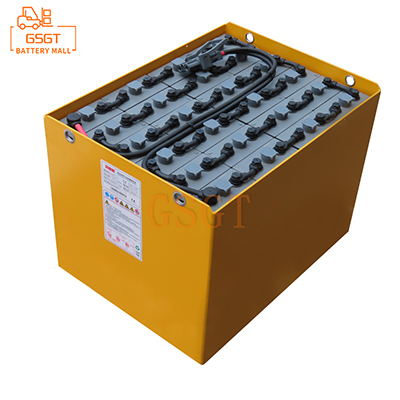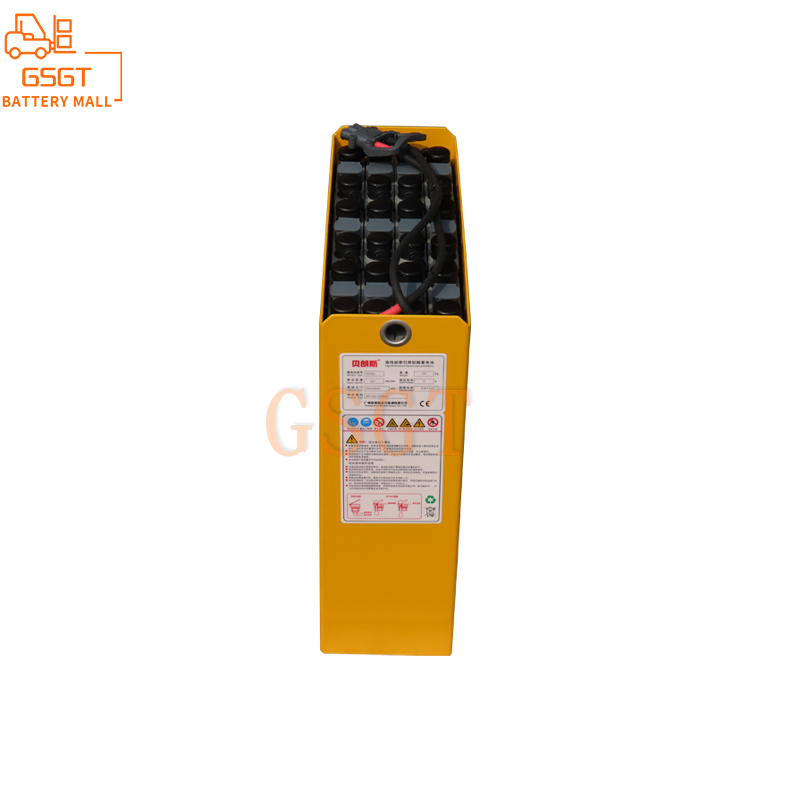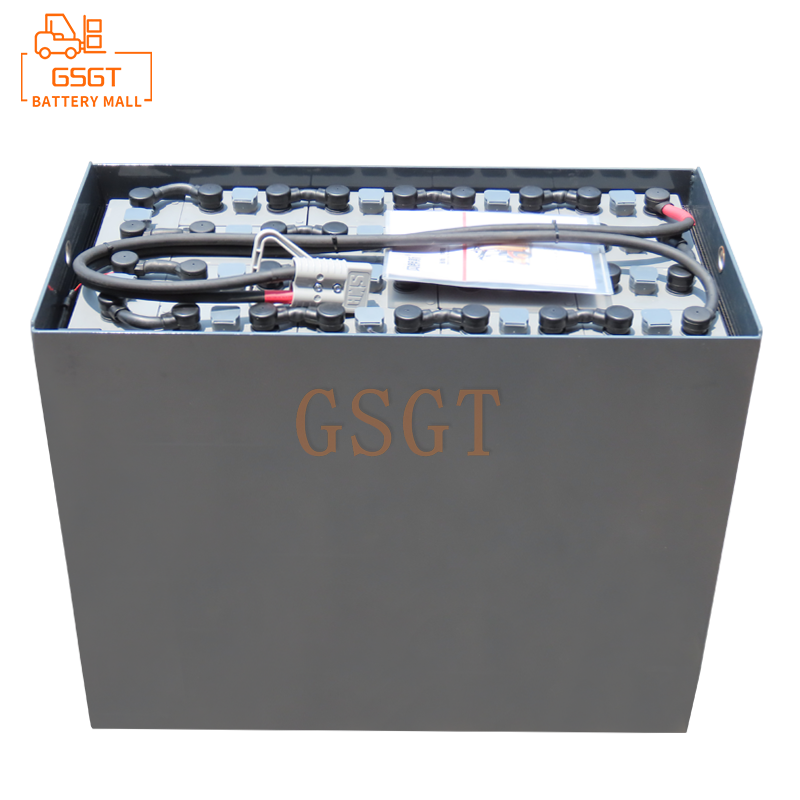Time:2025-04-08 09:37:12
Browse:635
In logistics warehousing, factory floors and other scenarios, forklifts as key handling equipment provide strong support for efficient operations. As the "power heart" of forklift truck, the safety of lead-acid battery is directly related to the stability of the entire operating environment and personnel safety. With the development of the industry, eliminating battery safety hazards has become the top priority to ensure stable production and operation.
First, forklift traction lead-acid battery safety risk analysis
(1) Charging process risk
1. ** Overcharging causes thermal runaway ** : When the charging device fails or the charging parameter is set improperly, the battery will continue to accept excessive current, resulting in a sharp rise in the internal temperature of the battery. Lead-acid battery in the overcharged state, water is electrolyzed to produce a large number of hydrogen and oxygen, these gases in the battery accumulation, if not discharged in time, easily lead to thermal runaway phenomenon, resulting in the battery shell deformation, rupture, and even fire.
2. ** Electrolyte overflow during charging ** : During the charging process, the internal pressure of the battery increases. If the safety valve fails or the vent hole is blocked, the electrolyte may be squeezed out of the battery housing. The electrolyte is highly corrosive. If it comes into contact with the metal parts of the forklift truck, the ground, or human skin, it will cause metal corrosion, ground damage, and human burns, seriously affecting the service life of the equipment and human safety.
(2) Hidden dangers in use and maintenance
1. ** Battery leakage risk ** : Long-term frequent use, the battery shell may crack due to vibration, collision, pole seal will also be due to aging and sealant decline, resulting in electrolyte leakage. The leaking electrolyte not only corrodes the surrounding equipment, but also pollutes the working environment and causes damage to the human respiratory tract. At the same time, the leaking electrolyte may also change the proportion of chemical substances inside the battery, affecting the battery performance and life.
2. Improper maintenance leads to short circuit ** : In daily maintenance, if the operator does not perform according to the specifications, such as leaving metal tools, debris on the surface of the battery, or misoperation when connecting the line, a short circuit may be formed between the positive and negative terminals of the battery. Short circuit will generate a large current, causing local overheating of the battery, and can directly cause a fire in serious cases, which poses a huge safety threat to forklift operation.
(3) Battery aging and life management issues
1. ** Capacity attenuation causes accidents ** : With the growth of use time, the capacity of the lead-acid battery gradually decreases. When the battery capacity is lower than a certain level, the forklift may suddenly lose power during operation. If the forklift is carried on a high position or on a slope, serious accidents such as cargo falling or rollover may occur, posing a major threat to personnel and cargo safety.
2. ** The thermal stability of the aging battery is reduced ** : the internal structure of the aging battery changes, the active substance of the electrode is reduced, the internal resistance is increased, and it is easier to generate heat during the charge and discharge process. Its thermal stability is far less than that of new batteries, even under normal charging and discharging conditions, it may be unable to effectively dissipate heat and thermal runaway risk, and aging batteries are more sensitive to environmental temperature changes, in high or low temperature environments, safety risks are further aggravated.
Second, the comprehensive strategy to eliminate security risks
(1) Charging facilities and environmental optimization
1. Select high-quality charging equipment ** : Purchase chargers with intelligent charging management function, such devices can automatically adjust the charging current and voltage according to the real-time status of the battery, effectively prevent overcharging. For example, some advanced chargers have built-in microprocessors that can accurately monitor battery voltage, current and temperature, and immediately cut off the charging circuit once an anomaly is detected to ensure charging safety.
2. ** Build a safe charging environment ** : Set up a special charging area, which should be well ventilated, the ground is laid with anti-corrosion and non-slip materials, and is equipped with necessary fire equipment, such as carbon dioxide fire extinguishers, dry powder fire extinguishers, etc. At the same time, clear warning signs are set up around the charging area to prohibit irrelevant personnel from approaching, so as to avoid safety accidents caused by personnel's misoperation. In addition, the electrical line in the charging area should be reasonably planned and laid to ensure that the line is well insulated to prevent fire caused by short circuit.
(2) Standardize the use and maintenance process
1. ** Strengthen operator training ** : Regularly organize forklift operators and battery maintenance personnel to participate in professional training, the training content covers the working principle of the battery, the correct use of methods, daily maintenance points and emergency measures. Through the combination of theoretical explanation and practical operation, the operator can deeply understand the importance of battery safety, master the correct operation skills, and reduce the safety risks caused by human error. For example, train the operator to ensure that the power is off when connecting the battery line, and connect the positive and negative terminals in the correct sequence to avoid the risk of short circuit.
2. ** Strict implementation of maintenance system ** : Establish a sound battery maintenance plan, stipulating daily, weekly, monthly maintenance items. Check the appearance of the battery every day whether there are cracks, leakage phenomenon, pole connection is firm; Clean the battery every week to remove surface dust and debris to prevent it from entering the battery and causing short circuit; Check the electrolyte level every month, and replenish the distilled water in time to ensure that the electrolyte concentration is in the normal range. In addition, record detailed maintenance information, including maintenance time, maintenance content, and battery status, so that you can find potential battery problems and take appropriate measures in a timely manner.
(3) Strengthen battery life monitoring and management
1. ** Introduction of battery monitoring system ** : The use of advanced battery monitoring technology, real-time monitoring of battery voltage, current, temperature, capacity and other parameters. Through data analysis, accurately grasp the health status of the battery and predict the remaining life of the battery. When the battery capacity decreases to a certain extent or other abnormal conditions occur, the system sends an early warning to remind the management personnel to replace the battery in time to avoid safety accidents caused by battery aging. For example, some intelligent battery monitoring systems can send data to the management platform through wireless transmission, and managers can check the battery status anytime and anywhere, convenient and fast battery life management.
2. ** Develop a reasonable battery replacement strategy ** : According to the battery monitoring data and actual use, develop a scientific and reasonable battery replacement cycle. For forklifts with frequent use and bad working conditions, the battery replacement cycle should be appropriately shortened; For forklifts with low frequency and good working conditions, the battery life can be reasonably extended on the premise of ensuring safety. At the same time, when replacing the battery, strictly follow the operating procedures to ensure that the new battery is correctly installed and securely connected to avoid safety problems caused by improper installation.
To eliminate the safety hazards of lead-acid batteries used in forklifts is a systematic project, which needs to start with charging facilities, use maintenance, life management and other links, and comprehensively use technical means, management measures and personnel training. Only by doing a comprehensive and multi-level safety prevention and control work can we effectively reduce safety risks, ensure the safe and efficient operation of forklift trucks, provide a solid guarantee for enterprise production and operation, and promote the sustainable and healthy development of the industry.

$1105

$3405

$1270

$2140

MESSAGE
Professional And Efficient
Security
Affordable Price
Professional Services